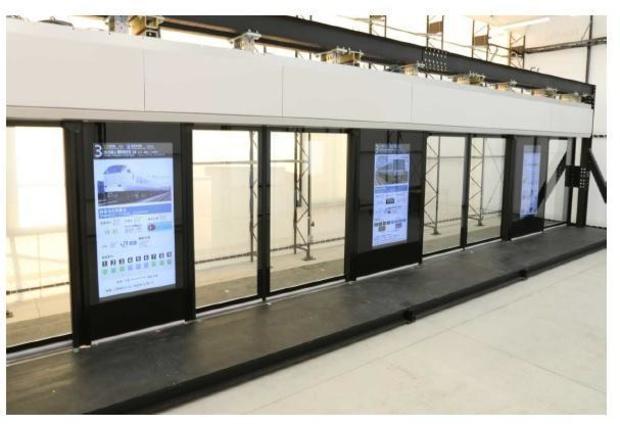What's so fancy about "the world's most advanced train station"?
Tokyo —What's being billed as "the world's most advanced train station" has opened in the western Japanese city of Osaka. Actually a new wing of the existing Osaka Station, eight minutes away via concourse, the "Umekita underground exit" aims to add 12,000 passengers to the station's current daily footfall of around 300,000 by offering speedier access to Kansai International airport and the neighboring prefecture of Wakayama, another major tourism destination.
"I'm absolutely thrilled," stationmaster Hiroyuki Watanabe told state broadcaster NHK when the four new train platforms opened for service in mid-March. "This is not just a different kind of train station — it's a next-stage station."
"The new station will have a huge impact on foot traffic," gushed local bar owner Masao Tejima, speaking to Television Osaka. "Especially post-pandemic, we really have high hopes."

The centerpiece of the high-tech train station is its unique floor-to-ceiling panels which — similar to room dividers in a traditional Japanese homes known as fusuma — slide on grooves in the floor; in this case, to protect passengers from falling onto the tracks.
The digital panels also flash helpful details about oncoming trains and routes, and unlike conventional barriers, can slide into different configurations, accommodating door layouts which may vary from train to train.
Over the last decade Japanese train and subway operators have invested vast sums to install a variety of protective platform barriers, from low-cost, low-tech cables that descend when trains stop, to $9 million, five-foot-tall sliding safety gates. While the growing use of platform barriers is partially responsible for rising fares, it's widely accepted as a necessary tradeoff given the alarming regularity of passengers tumbling onto tracks, often while inebriated, distracted by their smartphones or because of sight impairment.
A report by Dai-Ichi Life Research Institute directly correlated the wider use of platform barriers with reducing the incidence of falls, from 3,730 in 2014, to 1,370 in 2020. The statistics don't take into account the steep decline in public transit use during the pandemic, but the accident rate has trended lower over the last decade, regardless.
The new Osaka Station extension is bristling with other high-tech features: Instead of having to scan a prepaid train pass or feed a ticket into a turnstile, for instance, some riders can simply stroll through a wide-open walkway equipped with a facial recognition scanner. Still in experimental use, the system is available only to employees of JR West and commuter pass-holders.
Major Japanese transit hubs can be labyrinthine, and in Osaka, users can now enter their destination in a smartphone app to get personalized guidance. Each user is assigned a unique cartoon icon — an onion, or bunch of grapes, for instance — which they will see discretely pop up on station signs as they make their way through, like a trail of pixilated bread crumbs.
Long lines at the lavatory may become a thing of the past, too, as large digital bathroom signs show not only where the facilities are for men, women and people with disabilities, but thoughtfully detail exactly how many stalls are unoccupied in each.
Now, that's hospitality.
- In:
- Facial Recognition
- Japan
Disclaimer: The copyright of this article belongs to the original author. Reposting this article is solely for the purpose of information dissemination and does not constitute any investment advice. If there is any infringement, please contact us immediately. We will make corrections or deletions as necessary. Thank you.







